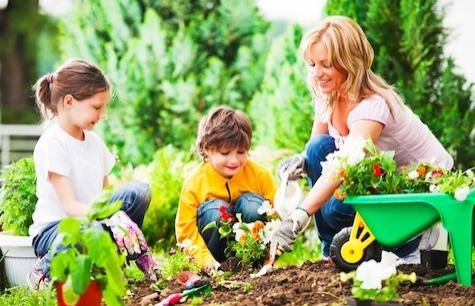Meal time can be a battle – routinely mum and child have very different ideas on what constitutes a good meal, and including veggies on the menu can be a particular sore point.
Getting kids in the garden from a young age can help them appreciate what’s on their plate and allows them to connect how gardening, vegetables and cooking combined can create delicious meals.
Here are some tips on getting kids gardening and appreciating what’s on their plate:
1. Choose wisely: if your child does have a favourite veggie, make sure you include it in the garden. Grow varieties that look interesting to attract their attention, including flowering and fruiting plants like tomatoes and strawberries. Fast-growing plants like radishes will produce results quickly – perfect for little ones with short attention spans.
2. Getting their hands dirty: involve them in the planting process, and get a mixture of seeds and seedlings so your child can see how plants progress. Giving them child-sized tools will make them feel like this is a job that’s specially meant for them and engage them further. And let’s not forget – anything to do with dirt is always a winner for kids (less so for mums; get those plastic aprons on)!
3.Track changes: help your child keep a gardening journal so they can track the growth of their seedlings. Inspire them to draw pictures and take photos of their plants, jotting down the bits they like best about gardening
4. Let it bee: point out insects and tell your child how they help plants grow – such as how bees pollinate flowers and worms cultivate soil. It will help build a bigger picture of all parts of the growing process and add a new dimension of interest.
5. Don’t let space be an issue: if you don’t have that much room in your garden, keep a small patch and include staple varieties of veggies which don’t require too much space to grow, such as capsicums. And if you don’t have an outside space, create a green area inside: grow things like rocket and cress which can be grown on any surface indoors.
6. Be water wise: show your child how watering their plants requires a gentle touch. Install conservation systems so they learn the value of saving water where possible – for example, collecting excess water in a bucket while you’re waiting for the shower to warm up or buying a rainwater tank.
7. Get cooking: even before your plants have reached maturity, start cooking with the plant varieties that are growing in the garden to show how their patience will be rewarded. Make creative, tasty yet simple things and get your child in the kitchen too. Giving a child simple, fun tasks makes them feel they are contributing and will look forward to the end result.








 Agree (0)
Agree (0) Disagree (
Disagree (










__small.png)










